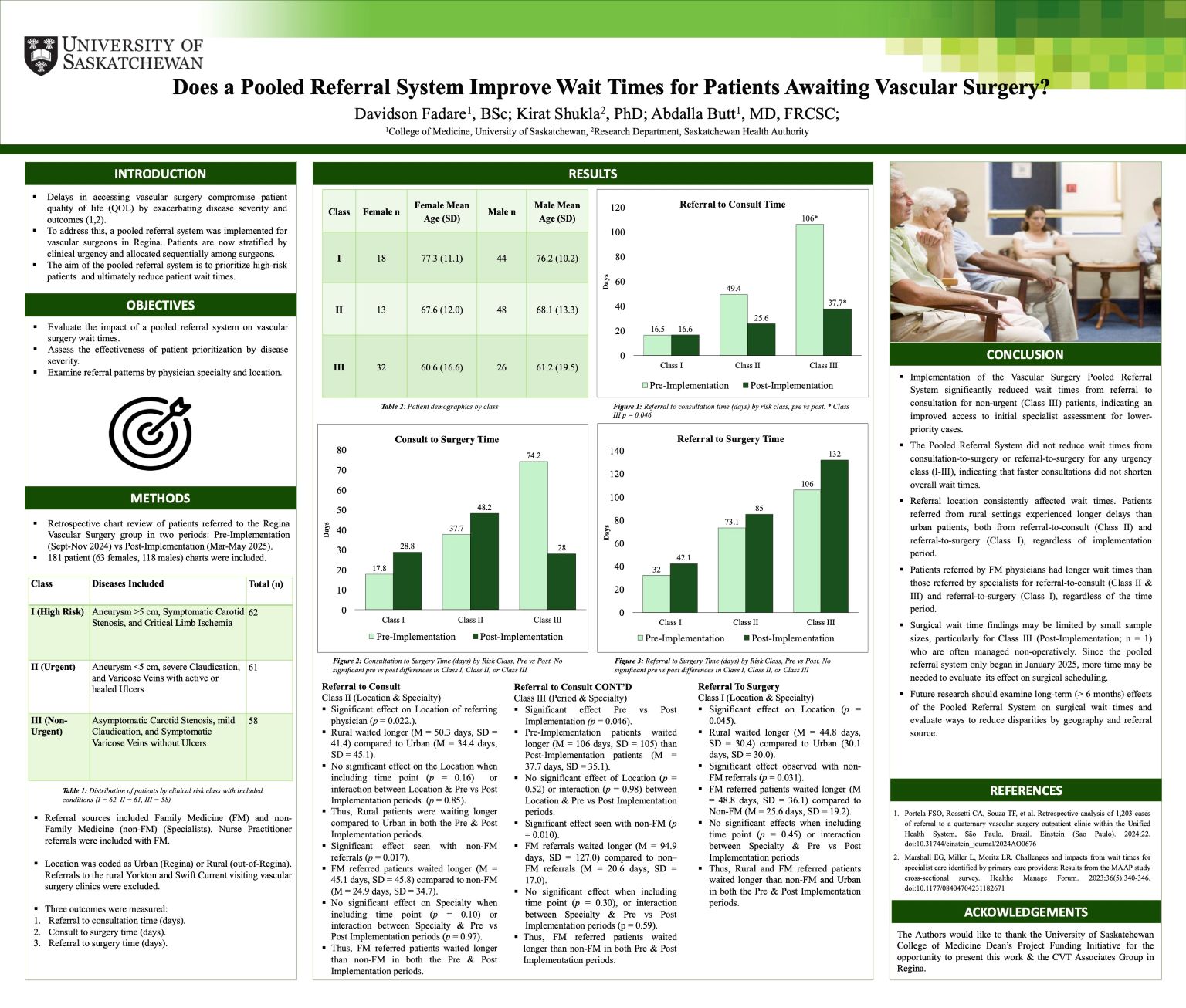
Does a Pooled Referral System Improve Wait Times for Patients Awaiting Vascular Surgery?
Davidson Fadare
Introduction: Delays in Vascular Surgery can negatively impact patient outcomes. In January 2025, Regina’s Vascular Surgery Group introduced a pooled referral system where referrals are triaged by urgency and assigned to the next available surgeon. This study evaluated the impact of the system on various wait times.
Methods: A retrospective chart review was conducted on 181 patients referred to vascular surgery during two time periods: Sept - Nov 2024 (pre-implementation) and Mar - May 2025 (post-implementation). Referral source (Family Medicine (FM) vs. non-FM) and location (urban vs. rural) were included. Wait times from referral-to-consult, consult-to-surgery, and referral-to-surgery was analyzed.
Results: Referral to consult times significantly improved post-implementation (M = 37.7 (SD = 35.1) vs. M = 106 days (SD = 145), p = 0.046). However, rural patients waited significantly longer than urban patients for referral to consult (50.3 vs. 34.4 days, p = 0.022) and referral to surgery (44.8 vs. 30.1 days, p = 0.045) times. FM referrals also had significantly longer waits than non-FM for referral to consult (45.1 vs. 24.9 days, p = 0.017) and referral to surgery (48.8 vs. 25.6 days, p = 0.031) times.
Conclusion: The pooled referral system improved timely access from initial consult to vascular care. However, rural patients and those referred by FM faced longer wait times, indicating a need for further changes to promote equitable access to vascular surgical care.
